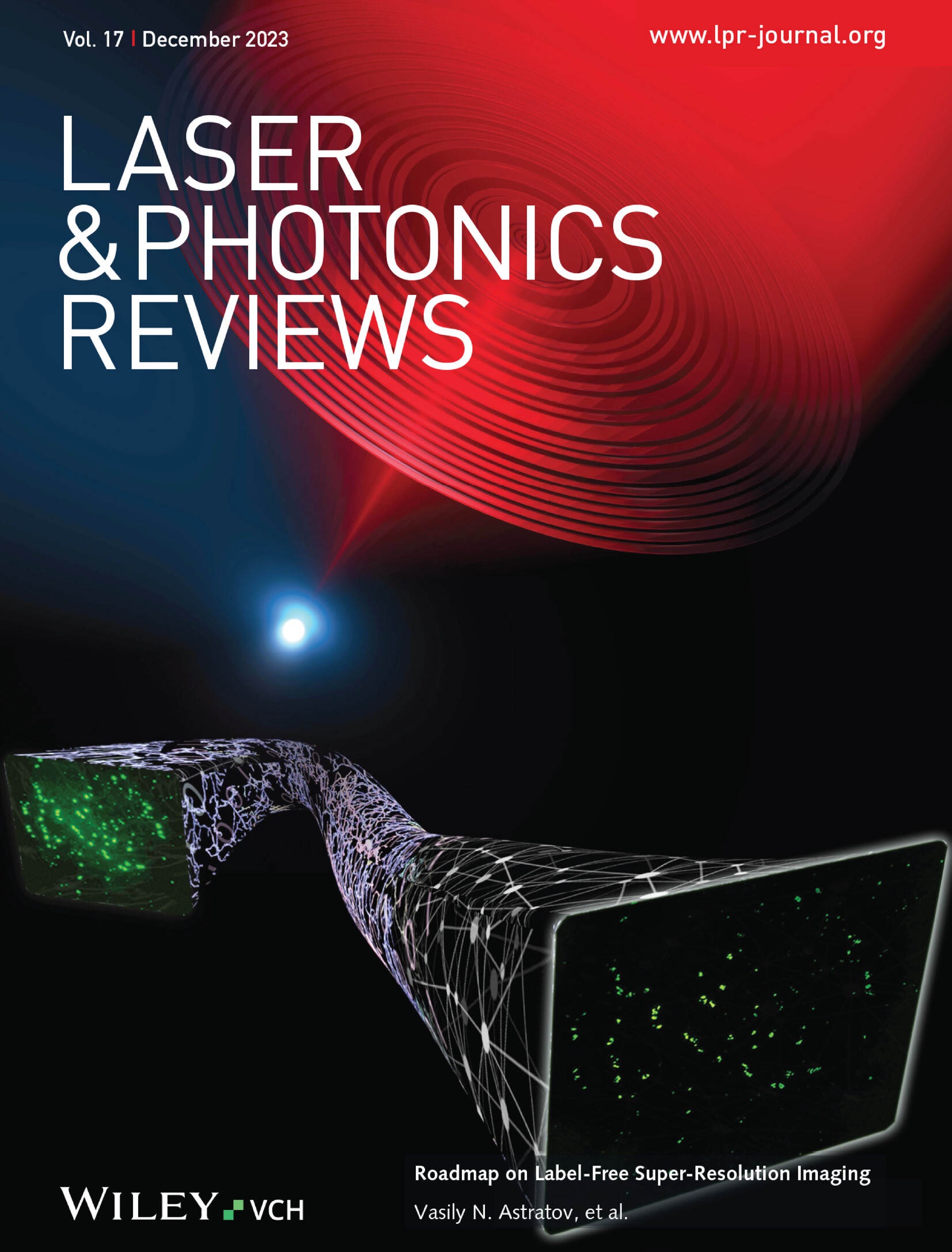126 Tbits/s Massive Parallel Physical Random Bits Generator with Broadband Chaos of Integrated AlGaAs Micro‐Resonator
IF 9.8
1区 物理与天体物理
Q1 OPTICS
引用次数: 0
Abstract
This study presents an ultra‐high‐speed physical random bits (PRBs) generator based on an integrated AlGaAs micro‐resonator. The AlGaAs micro‐resonator generates hundreds of parallel comb teeth, which span a broad wavelength range from 1300 to 1740 nm with a 420 GHz free spectral range (FSR). These teeth exhibit a flat spectral profile and cover over a 10 GHz radio frequency range with chaotic dynamics, attributed to the high nonlinearity of AlGaAs, being nearly an order of magnitude broader than that of Si集成AlGaAs微谐振器的宽带混沌126tbits /s大规模并行物理随机比特发生器
本研究提出了一种基于集成AlGaAs微谐振器的超高速物理随机比特(PRBs)发生器。AlGaAs微谐振器产生数百个平行梳齿,其波长范围从1300到1740 nm,自由光谱范围(FSR)为420 GHz。由于AlGaAs的高非线性,这些齿具有平坦的光谱轮廓,覆盖了超过10 GHz的无线电频率范围,具有混沌动力学,比Si3N4宽近一个数量级。齿状混沌在亚纳秒尺度上振荡,排列熵(PE)值仅在≈0.1 ns内达到0.999。使用这种广泛的混沌源,可以接收到NIST SP 800-22认证的每通道280 Gbps的超高速pra生成。考虑到AlGaAs微谐振器中超过100个梳齿,PRBs的总生成速率估计为≈28 Tbps。通过采用简化的后处理方案,可以实现每通道160 Gbps的合格PRBs,产生≈16 Tbps的总速率。此外,通过将集成的AlGaAs微谐振器升级到100 GHz的更小FSR,实验中实现了450多个混沌梳齿。因此,PRBs的生成速率估计为≈126 Tbps (280 Gbps × 450)。
本文章由计算机程序翻译,如有差异,请以英文原文为准。
求助全文
约1分钟内获得全文
求助全文
来源期刊
CiteScore
14.20
自引率
5.50%
发文量
314
审稿时长
2 months
期刊介绍:
Laser & Photonics Reviews is a reputable journal that publishes high-quality Reviews, original Research Articles, and Perspectives in the field of photonics and optics. It covers both theoretical and experimental aspects, including recent groundbreaking research, specific advancements, and innovative applications.
As evidence of its impact and recognition, Laser & Photonics Reviews boasts a remarkable 2022 Impact Factor of 11.0, according to the Journal Citation Reports from Clarivate Analytics (2023). Moreover, it holds impressive rankings in the InCites Journal Citation Reports: in 2021, it was ranked 6th out of 101 in the field of Optics, 15th out of 161 in Applied Physics, and 12th out of 69 in Condensed Matter Physics.
The journal uses the ISSN numbers 1863-8880 for print and 1863-8899 for online publications.

 求助内容:
求助内容: 应助结果提醒方式:
应助结果提醒方式:


